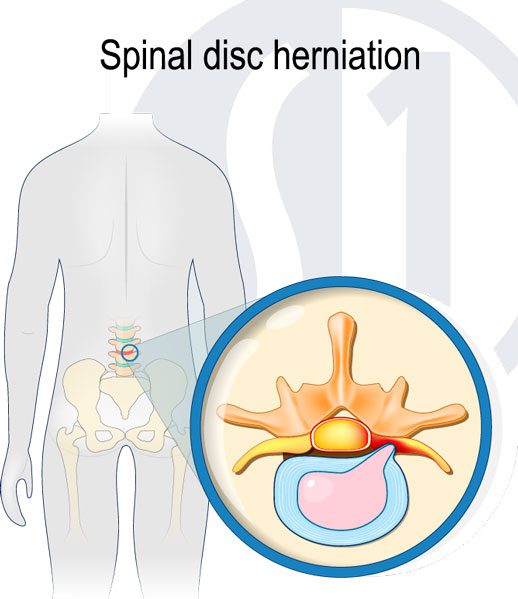Disc Protrusion
A Common Form of Disc Deterioration
Disc protrusion is a common form of spinal disc deterioration that can cause neck and back pain. Changes occurring with the regular aging process are responsible for disc deteriorations, although an injury might speed up the degenerative process. However, a protruding disc may go undetected unless it encroaches upon a nearby nerve.
With age, all body parts change, including the components of the spine. Discs dehydrate and lose elasticity. This weakens the disc and makes it more vulnerable to the following stages:
- The first stage following natural weakening may be classified as a disc protrusion when the disc’s core (contained within the disc’s tough outer wall) has begun pushing into the spinal column. Disc protrusions may involve 180 degrees or less of the disc’s circumference.
- The second stage of disc deterioration often consists of a bulging disc, when the disc’s inner core moves farther around the disc circumference beyond its normal parameters as it pushes into the disc’s outer layer, called the annulus fibrosus, creating a bulge. A bulging disc is said to involve more than half (more than 180 degrees) of the disc’s circumference.
- The third stage is the final stage may be a herniated disc, which means the disc’s outer wall finally tears, allowing the inner gel-like material to escape containment by the outer wall.
It is important to remember that different health care providers may use terms like bulging disc, disc protrusion and herniated disc interchangeably, so you may want to ask for clarification if these terms are discussed during your diagnosis. Also, keep in mind that a disc with a bulge in the outer wall will not always lead to a herniation, or tear, in the disc wall. Disc bulges and tears are often unrelated.
Schedule a Same Day Appointment
Disc Protrusion Symptoms

Disc Protrusion Treatment
Diagnosing a disc protrusion requires a mixed discipline of a preliminary exam to discuss medical history and the symptoms leading up to the visit, plus the use of medical imagery, and perhaps a detailed assessment of a patient’s range of motion. Conservative disc protrusion treatment methods are often quite effective and typically include massage, bed rest, physical therapy and pain medications. In the cases of debilitating pain, interventional therapies can help provide relief that allows for an ongoing therapeutic exercise routine to return to normal spine function. Spine surgery is only considered when conservative treatment of the disorder has proven ineffective after several months or a patient’s symptoms are extreme and debilitating.